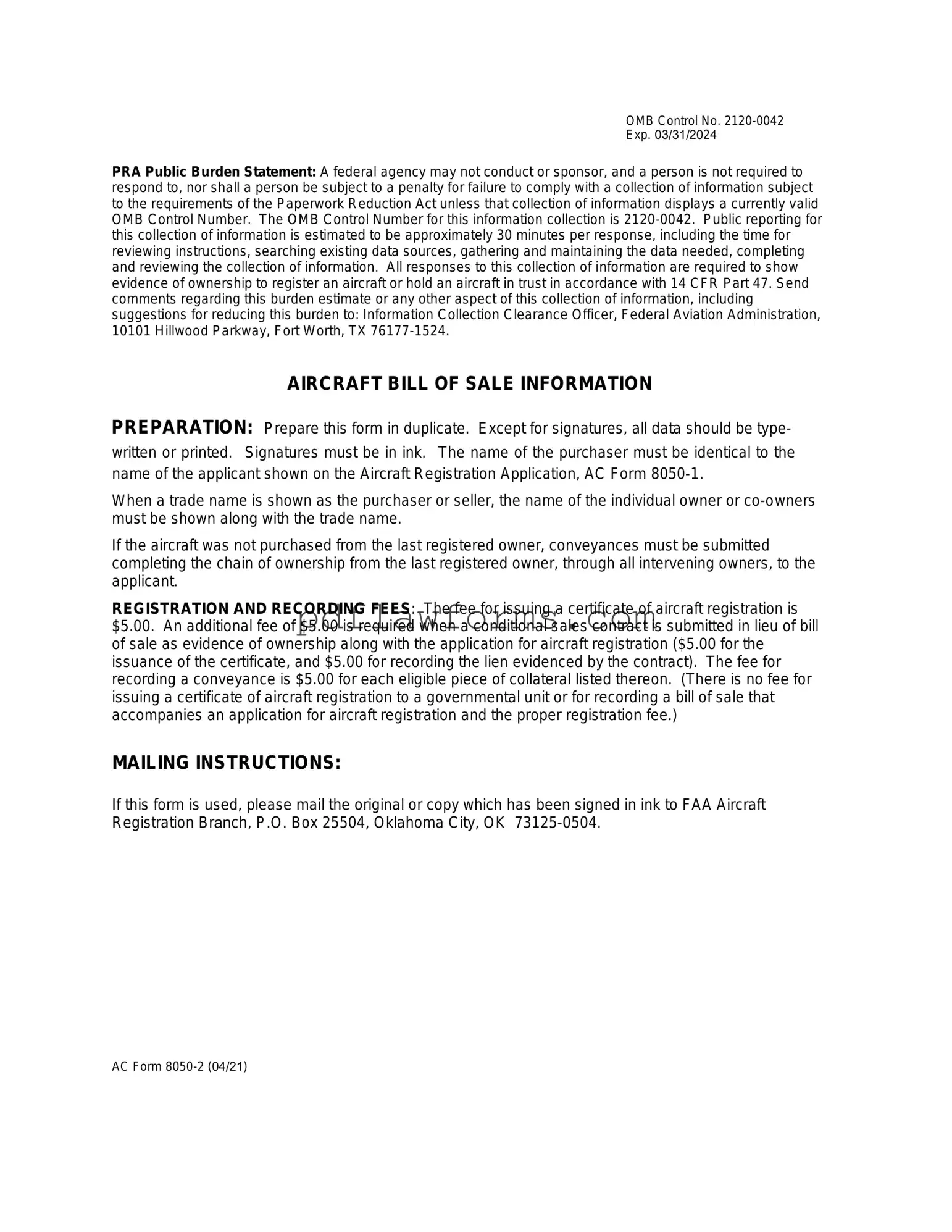Filling out the Aircraft Bill of Sale AC 8050-2 form can seem straightforward, but many people make common mistakes that can lead to complications later on. One frequent error is providing incorrect information about the aircraft's registration number. This number is crucial for identifying the aircraft and must match exactly with what is on the official records.
Another common mistake involves the seller's signature. Some individuals forget to sign the form altogether, while others may not use their full legal name. It's essential to ensure that the signature matches the name on the title to avoid any disputes in the future.
Additionally, the date of the sale is often overlooked or incorrectly filled out. This date is important for establishing ownership and should reflect the actual date when the transaction takes place. Failing to provide an accurate date can create confusion regarding ownership transfer.
Many people also neglect to include the purchase price of the aircraft. This information is necessary for tax purposes and should be clearly stated in the appropriate section of the form. Leaving this blank can lead to issues with the IRS or state tax authorities.
When it comes to the buyer's information, inaccuracies can cause problems. Some individuals may mistakenly input an incorrect address or omit essential details. It's vital to double-check that all contact information is accurate and complete to ensure smooth communication post-sale.
Another mistake often made is failing to provide the correct aircraft model and serial number. These details are critical for identification and must match the records held by the Federal Aviation Administration (FAA). Any discrepancies can lead to delays in the registration process.
People sometimes forget to have the form notarized. While not always required, having a notary public witness the signatures can add an extra layer of legitimacy to the transaction. This step can help prevent future disputes over the authenticity of the sale.
In some cases, individuals fail to keep a copy of the completed form. It’s essential to retain a copy for personal records, as it serves as proof of ownership and can be needed for future transactions or inquiries.
Another oversight is not checking for any outstanding liens on the aircraft. Buyers should ensure that the aircraft is free of any debts or claims before completing the sale. This can prevent future financial headaches.
Lastly, people often underestimate the importance of reading the entire form carefully. Skimming through the instructions can lead to missing crucial details that could affect the validity of the sale. Taking the time to thoroughly review the form can save significant trouble down the line.
